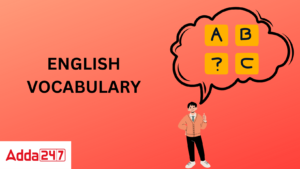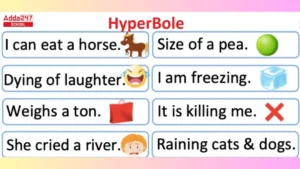Possessive Nouns
A possessive noun is one that expresses ownership and is typically denoted by the letter “s.” The term “student’s” is a possessive noun in the phrase “the student’s notes,” indicating that the student is the owner of the notes.
Certain aspects of possessive nouns, such as how to make a word ending in s possessive or what the proper possessive form of plural nouns is, might be challenging to understand. The entire concept of possessive nouns is covered in detail here, along with examples. But first, let’s clarify what “possessive” actually means.
What is Possessive Noun?
Possessive noun is a type of noun used to indicate ownership or connection in English. Nouns are words that identify a specific individual, location, or thing. In contrast to plural nouns, singular nouns only refer to one of these things. A proper noun designates a particular person or location, such as the president of the United States or New York.
With the addition of an apostrophe and the letter “s” at the end of the word, all nouns are transformed into possessive nouns. The possessive form of a word only has to be written with an apostrophe at the end when a plural noun ends in the letter “s,” though.
What is Possessive Form?
Before we get into the details of possessive nouns, let’s define a possessive word in general grammatical terms. The possessive case usually shows ownership of something (Sanjay’s phone) or a direct relationship with something (Sanjay’s sister). Let’s look at some examples in real sentences.
Seema takes her book from Reema’s book.
There are two possessive words in this sentence. The possessive adjective her, reflecting Seema, refers to possession of the book. Reema’s possessive noun identified by the ending ‘ shows that the book belongs to Reema.
Possessive Nouns- Types
There are 4 types of Possessive Nouns in the English language. We will study in detail of each type of possessive noun
- Singular Possessive Nouns
- Plural Possessive Nouns
- Irregular Possessive Nouns
- Possessive Pronouns
Singular Possessive Nouns – Add apostrophe and ‘s’
Plural Possessive Nouns – Add apostrophe after ‘s’
Irregular Possessive Nouns
An irregular noun is one that, in its plural form, has a different spelling, such as “man” and “men.” By adding an apostrophe and the letter “s” to the end of the word, an irregular possessive noun adheres to the same English grammatical rules as a regular plural noun. When irregular plural nouns, like “knives,” finish in a “s,” simply an apostrophe is needed.
Possessive Pronouns
Possessive pronouns, which denote possession, are also referred to as absolute or strong pronouns. The possessive pronouns “mine,” “theirs,” “yours,” and “hers” are a few examples. Additionally, some independent possessive pronouns, such “mine” and “her,” do not require the extra letter “s” or an apostrophe.
Possessive Nouns Examples
Here some examples are given below of possessive nouns which will give you a better idea to use possessive pronouns
- The mother’s new dish was a hit.
- The landlords‘ place can not be used for personal work.
- Nobody could find the Seema’s new watch.
- The Earth’s climate has changed due to pollution.
- The company was not satisfied with new employee’s work.
- This book is hers.
- My sister-in-law’s cousin got married to my cousin.
- Nick and Jones’ grandparents visit them every summer.
- Are you going to Mariah’s bachelorette party?
- Isn’t this yours?
Possessive Noun Rules in Grammar
Here, some rules of the possessive noun are being discussed which will make you understand how to use possessive nouns in English Grammar.
1) Any singular noun can be changed to its possessive form by finishing it with an apostrophe and the letter “s.”
For example: boy’s and table’s.
2) When you have a plural noun ending in “s,” add an apostrophe to the end, and no extra “s” is required.
For example: boys’, and girls’.
3) The apostrophe + “s” rule does not apply to the possessive form of the pronoun “it.” It is possible to make the word “its” possessive without using an apostrophe.
For example: The sweet has passed its expiry date.
4) The last word of hyphenated nouns that are used as a unit receives an apostrophe. To indicate possession, you must add an apostrophe and the letter “s” to the end of the composite word.
For example: my brother-in-law’s cousin and committee’s decision
5) Only last possession for the final noun in a set of nouns when more than one noun shares ownership. Only the final noun should have the apostrophe + “s” applied.
For example: Tom and Hardy’s new house is beautiful.
6) When two or more nouns denote ownership, but the ownership is separate. Then each noun is given the apostrophe + “s” to indicate independent possession.
For example: Maria’s and Sania’s school bags are red and yellow.
Difference Between Possessive Noun and Possessive Adjectives
Like possessive nouns, possessives adjectives show ownership or direct connection. Possessive adjectives correspond to English pronouns, corresponding person, gender and number.
| Singular | Plural | |
| First Person | my | our |
| Second Person | your | yours |
| Third Person | his, her, their, its | their |
In addition, a possessive adjective that acts as the possessive form of a relative pronoun that can add relative clauses and clauses. Unlike possessive nouns below, possessives do not use apostrophes. This is especially true of the possessive adjective it, which is notoriously confused with the contraction meaning it is.
Possessive Noun Worksheet
Do you want to see how well you grasp the formation of singular and plural possessive nouns? Take a look at the worksheet below. Choose the appropriate possessive noun (that ends in’s or just ‘) for each phrase based on the noun that is given in brackets.
- The [dog] _____ toys haven’t been touched.
- Her [parents] _____ house was in the middle of nowhere.
- The [children] _____ dinner is almost ready.
- This [thesis] _____ main goals are outlined below.
- That was [Sergius] ______ idea, not mine.
Other related posts:
| Tense Chart | Types of sentences | Irregular verbs |
| Direct and Indirect | Compound nouns | Central Idea of the passage |










 Vocabulary Words with Meaning and Senten...
Vocabulary Words with Meaning and Senten...
 Past Perfect Tense: Definition, Formula,...
Past Perfect Tense: Definition, Formula,...
 Hyperbole- Explanation, Definition, Exam...
Hyperbole- Explanation, Definition, Exam...














